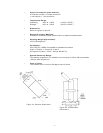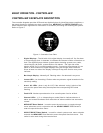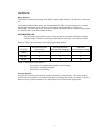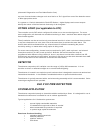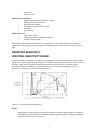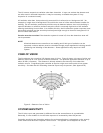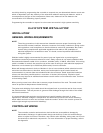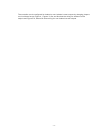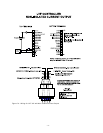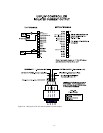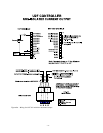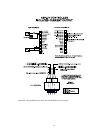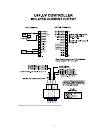- 10 -
sensitivity levels by programming the controller to respond at a pre-determined detector count rate
which is dependent upon the intensity of the ultraviolet radiation reaching the detector, which in
turn depends on the type of fuel, temperature, flame size, distance from the detector and
concentration of UV absorbing vapors present.
Programming the controller to respond to a low count rate results in high system sensitivity.
Unit III SYSTEM INSTALLATION
INSTALLATION
GENERAL WIRING REQUIREMENTS
NOTE
The wiring procedures in this manual are intended to ensure proper functioning of the
device under normal conditions. However, because of the many variations in wiring codes
and regulations, total compliance to these ordinances cannot be guaranteed. Be certain
that all wiring complies with applicable regulations that relate to the installation of
electrical equipment in a hazardous area. If in doubt, consult a qualified official before
wiring the system.
Shielded cable is highly recommended for power input and signal wires to protect against
interference caused by extraneous electrical 'noise'. Relay outputs do not require shielded cable.
Recommended detector cable is four conductor, shielded cable, 18 AWG, rated 300V. If the wiring
cable is installed in conduit, the conduit must not be used for wiring to other electrical equipment.
Detectors can be located up to 2000 feet (600 metres) from the controller.
Water will damage electronic devices. Moisture in the air can condense within electrical conduit
and drain into the enclosure, therefore, water-proof and explosion-proof conduit seals are
recommended to prevent water accumulation within the enclosure. Seals should be located as
close to the device as possible and not more than 18 inches (46 cm) away. Explosion-proof
installations may require an additional seal where conduit enters a non-hazardous area. Conform
to local wiring codes.
When pouring a seal, use a fibre dam to assure proper formation of the seal. The seals should
never be poured at temperatures below freezing.
The jacket and shielding of the cable should be stripped back to permit the seal to form around
the individual wires. This will prevent air, gas and water leakage through the inside of the shield
and into the enclosure.
It is recommended that explosion-proof drains and conduit breathers be used. In some
applications, alternate changes in temperature and barometric pressure can cause 'breathing'
which allows moist air to enter and circulate inside the conduit. Joints in the conduit system are
seldom tight enough to prevent this 'breathing'.
CONTROLLER WIRING
NOTE
The controller contains semiconductor devices that are susceptible to damage by
electrostatic discharge. An electrostatic charge can build up on the skin and discharge
when an object is touched. Therefore, use caution when handling, taking care not to touch
the terminals or electronic components. For more information on proper handling, refer to
the Appendix.




